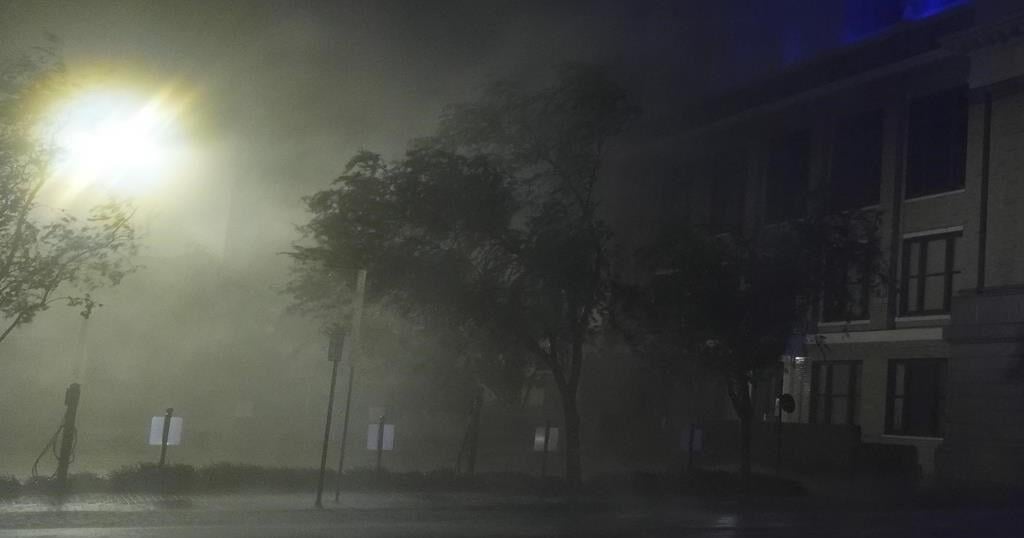ST. PETERSBURG, Fla. (AP) — The roof panels over the home of baseball’s Tampa Bay Rays were ripped to shreds by the force of Hurricane Milton, with debris littering the field and much of the seating areas Thursday after the deadly storm barreled across the state.
Team officials said only a handful of “essential personnel” were inside Tropicana Field, located in St. Petersburg, when the storm hit. Aerial images showed the swaths that serve as the domed building’s roof were completely tattered, giving a clear line of sight inside the stadium.
Sections of the roof — some relatively small, some large enough to cover several rows of seats — fell inside the ballpark.
No injuries at the stadium were reported. Florida Gov. Ron DeSantis had said earlier in the week that there were plans for the ballpark to serve as a “temporary base camp” to support debris cleanup operations and temporarily house some first responders. But those plans were changed as the storm neared, amid concerns that the roof simply would not survive Milton’s wrath.
“They were relocated,” DeSantis said at a Thursday morning news conference. “Tropicana Field is a routine staging area for these things. The roof on that … I think it’s rated for 110 mph and so the forecast changes, but as it became clear that there was going to be something of that magnitude that was going to be within the distance, they redeployed them out of Tropicana. There were no state assets that were inside Tropicana Field.”
The Rays said no official determination about damage inside the facility would be made until officials say conditions are safe to venture into the area. There also was no immediate word on how long the roof replacement may take, or if the team will make alternate arrangements for the 2025 season.
The team previously said that Tropicana Field features the world’s largest cable-supported domed roof, with the panels made of “translucent, Teflon-coated fiberglass” supported by 180 miles of cables connected by struts.
The roof was designed to withstand wind of up to 115 mph, according to the Rays. The stadium opened in 1990 at an initial cost $138 million and is due to be replaced in time for the 2028 season with a $1.3 billion ballpark.
Magic return delayed
The Orlando Magic were planning to spend Thursday in San Antonio and return home on Friday, a day behind their original schedule for the week.
The Magic played a preseason game in San Antonio on Wednesday night. They intended to fly home Thursday, arriving in Orlando in the early afternoon — those plans being scrapped because of Milton.
Instead, the Magic scheduled a practice in San Antonio on Thursday and have tentative plans to fly back to Orlando on Friday. A preseason game that was to be played Friday in Orlando between the Magic and the New Orleans Pelicans was canceled and will not be rescheduled.
“There’s always things bigger than the game of basketball and that’s what we have to keep our perspective on,” Magic coach Jamahl Mosley said. “Knowing that there’s families and homes and situations that are going through a tough time right now, we need to be mindful of that and conscious of it.”
The Magic-Pelicans game is the second NBA preseason matchup to be affected by Milton. A game scheduled for Thursday in Miami between the Heat and Atlanta Hawks was postponed until Oct. 16 because of storm concerns. Also called off earlier this week: a rescheduled NHL preseason game on Friday in Tampa between the Lightning and Predators — one that was originally set to be played last month and was postponed because of Hurricane Helene.
___
AP sports:
